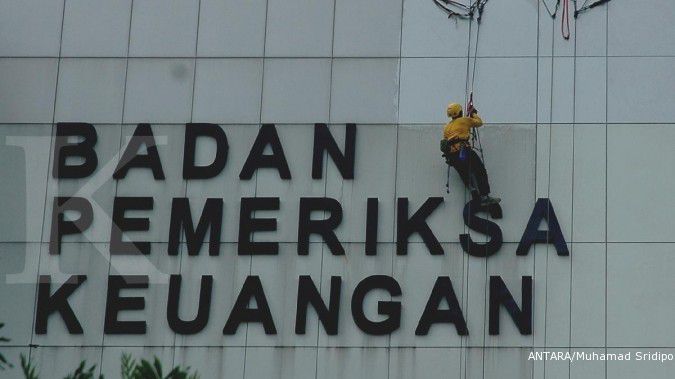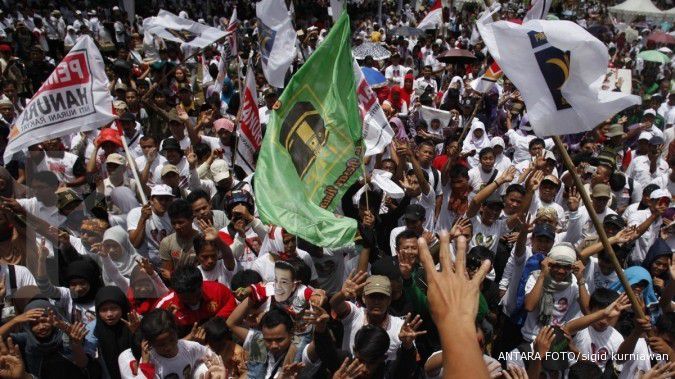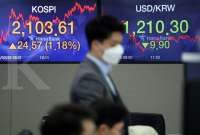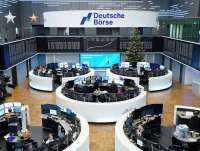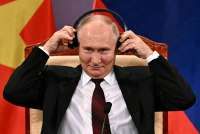JAKARTA. Government spending and exports became the main driver of gross domestic product (GDP) growth last year and managed to offset a decline in investment.
Despite volatility in the financial market, the economy expanded by 5.72 percent in the fourth quarter, higher than 5.62 percent posted a quarter earlier, the Central Statistics Agency (BPS) reported Wednesday.
Observers previously expected Indonesia to see further slowdown, as the consensus of economists, as well as the government, predicted that the economy might only grow by 5.3 percent in the fourth quarter.
Expectations of a slowdown grew after Bank Indonesia (BI) performed bold monetary tightening to put the brakes on the too-fast economy. Last year, the central bank hiked its key interest rates by 175 basis points to 7.5 percent to push down the current-account deficit and inflation, both of which were on the rise and posed risks of overheating.
“This shows that Indonesia’s economic fundamentals are strong, as efforts to push down current-account deficit and inflation can be achieved with quite good economic growth,” BI Deputy Governor Perry Warjiyo said on Wednesday.
The fourth quarter results took full-year 2013 economic growth to 5.78 percent, the second-highest among G20 economies after China, cementing the archipelago’s status among the world’s most resilient economies amid uncertainties in the external environment.
However, growth in 2013 was the lowest in four years.
While household-consumption growth stood strong on a year-on-year basis, gross fixed capital formations (PMTB) growth — an indicator of investment — saw a significant decline to 4.7 percent throughout last year, compared to 9.8 percent in 2012, due to BI’s monetary tightening.
The decline in investments was offset by the surge of growth in exports and government spending, both of which accelerated by 5.3 percent and 4.9 percent, respectively.
Exports only grew by 2 percent while government spending expanded by a modest 1.3 percent in 2012.
“The fact that contribution from government spending was high showed that our programs to accelerate fund disbursement had bore fruit,” Finance Minister Chatib Basri told reporters in his Jakarta office.
Meanwhile, exports were on the upward trajectory because of signs of improvement in the global economy, notably in the US, the minister said.
The pick-up in economic growth was the second time Indonesia posted economic data surprises. Earlier this week, the BPS reported that trade surplus was US$1.5 billion in December — twice higher than economists’ estimates.
Improvements in economic data shows that investors might have been too bearish on Indonesia, with a massive sell-off of rupiah assets last year occurring because investors “overpriced” the country’s macro-fundamental risks, analysts from Société Générale said recently.
In an interview with The Jakarta Post recently, US economist Nouriel Roubini also said that there should not be unwarranted concern over the slowdown.
Indonesia’s annual GDP growth could return to above 6 percent by 2015, said Roubini, the so-called “Dr. Doom” who correctly predicted the last US financial crisis.
However, others warned it was still too early for policy makers to become complacent.
The latest economic growth pickup might not represent a trend reversal, warned Citi Research economist Helmi Arman, who argued that the economy might be heading toward a “soft landing”.
“Firstly, domestic demand is still tempered,” he explained in a research note. “Secondly, we do not think the export volume increase in the fourth quarter is sustainable, as it was not broad based and driven somewhat by ore exports, which will not continue in 2014.” (Satria Sambijantoro)
/2011/11/06/1894199783p.jpg)

